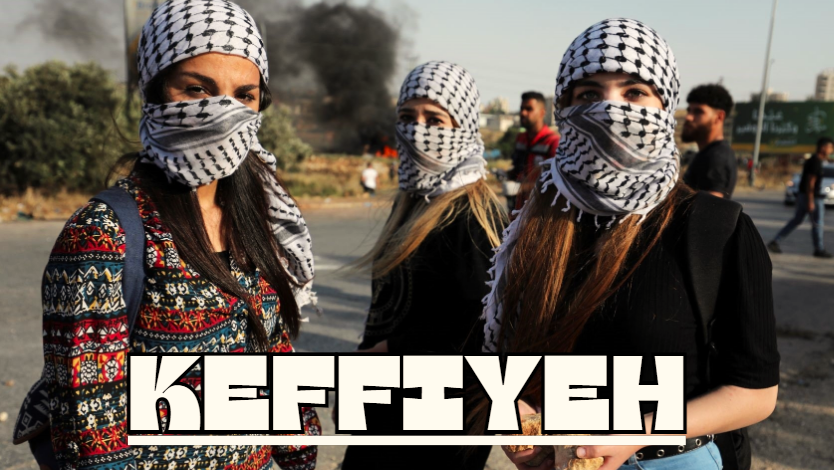The keffiyeh, also known as the kufiya, ghutra, or shemagh, is a traditional Middle Eastern headdress that has become a powerful symbol of culture, heritage, and resistance. Originating from the Arab world, this square scarf is typically made from cotton and adorned with distinctive woven patterns. Its historical roots and contemporary relevance make it a fascinating subject of study.
Historical Origins of the Keffiyeh
Ancient Beginnings
The keffi yeh’s origins trace back to ancient Mesopotamia, where it was initially used for practical purposes. Farmers and shepherds wore it to protect themselves from the harsh desert sun, wind, and dust. The keffiyeh provided essential protection, demonstrating early on its practical significance.
Cultural Evolution
Over time, the keffi yeh evolved from a simple protective garment to a symbol of Arab identity and resistance. In the early 20th century, it became associated with the Arab Revolt against Ottoman rule and later the Palestinian struggle for independence. This transformation highlights the keffi yeh’s deep-rooted connection to political and cultural movements in the Middle East.
The Keffiyeh in Modern Times
Global Recognition
In the late 20th and early 21st centuries, the keffi yeh gained international recognition beyond the Middle East. It became a symbol of solidarity and resistance for various global movements, including anti-globalization protests and other social justice causes. This global adoption underscores the keffi yeh’s versatile and powerful symbolic nature.
Fashion Statement
The keff iyeh’s distinctive patterns and versatile design have also made it a popular fashion accessory worldwide. Designers and fashion enthusiasts have embraced the keffi yeh, incorporating it into their collections and streetwear. Its aesthetic appeal, combined with its cultural significance, has cemented its place in contemporary fashion.
Significance of the Keffiyeh Patterns and Colors
Traditional Patterns
The traditional keff iyeh is usually white with a woven checkered pattern in black or red. The black and white kef fiyeh is most commonly associated with Palestine, while the red and white variant is often linked to Jordan. These patterns are not merely decorative; they carry deep cultural and political meanings.
Symbolic Colors
The colors of the keffi yeh also hold significant symbolic value. Black and white symbolize Palestinian nationalism, while red and white are associated with Bedouin tribes and Jordanian heritage. Other color variations have emerged, each carrying its own cultural and political connotations, reflecting the wearer’s identity and affiliations.
The Keffiyeh in Popular Culture
Media and Celebrities
Celebrities, artists, and activists have all worn the keff iyeh, making notable appearances in popular culture. Figures like Yasser Arafat, who frequently wore a keff iyeh, have reinforced its association with Palestinian identity and resistance. In Western culture, celebrities such as Rihanna and Kanye West have been spotted wearing keffi yehs, further propelling its status as a fashion icon.
Cinematic Representations
Movies and television series have also featured the keff iyeh, often using it to signify a character’s cultural background or political stance. This representation in media helps perpetuate the keffi yeh’s image as a symbol of resistance and cultural pride.
The Keffiyeh as a Political Symbol
Palestinian Identity
The keffi yeh is perhaps most famously associated with the Palestinian cause. It became a symbol of Palestinian nationalism during the 1936–1939 Arab revolt in Palestine and later during the First Intifada. Wearing the keffi yeh is a way for Palestinians to express solidarity, resistance, and a deep connection to their heritage.
Global Solidarity
Numerous activist groups from other parts of the world have adopted the keffiyeh. It is worn as a gesture of solidarity with oppressed peoples and as a statement against imperialism and occupation. This widespread adoption highlights the keffi yeh’s role as a universal symbol of resistance and social justice.
How to Wear a Keffiyeh
Traditional Methods
There are several traditional ways to wear a keff iyeh, each with its own cultural significance. The most common method involves folding the scarf into a triangle and draping it over the head, with the ends wrapped around the neck. This style is practical and provides maximum protection from the elements.
Modern Styles
In modern fashion, the keff iyeh is often worn as a scarf or shawl. It can be draped around the neck, shoulders, or even used as a headband. These styles highlight the keffi yeh’s versatility and its ability to blend traditional and contemporary aesthetics.
Caring for Your Keffiyeh
Washing Instructions
To maintain the keffi yeh’s quality and longevity, it should be hand-washed in cold water with mild detergent. Avoid using bleach or harsh chemicals, as they can damage the fabric and colors.
Storage Tips
When not in use, store the keffi yeh in a cool, dry place away from direct sunlight. This helps preserve its colors and prevents the fabric from becoming brittle or faded.
Conclusion
The keffi yeh is more than just a piece of cloth; it is a powerful symbol of culture, resistance, and identity. Its rich history and evolving significance make it a unique and enduring element of Middle Eastern heritage. Whether worn for practical purposes, as a fashion statement, or as a political symbol, the keffi yeh continues to inspire and unite people across the globe.




